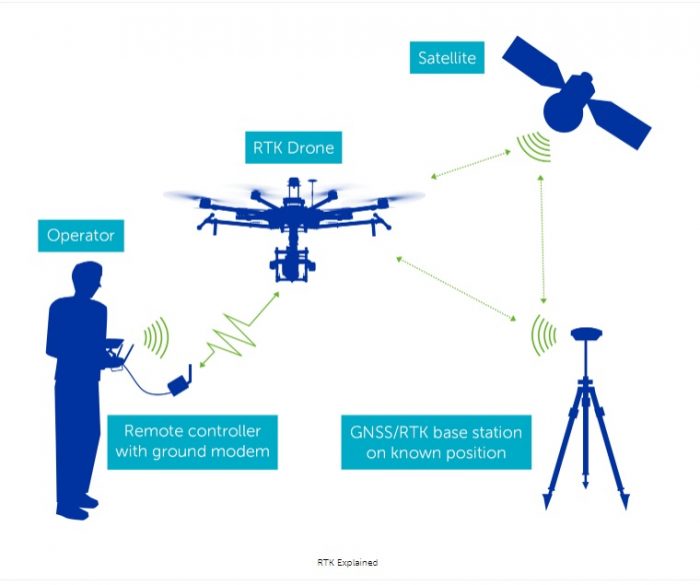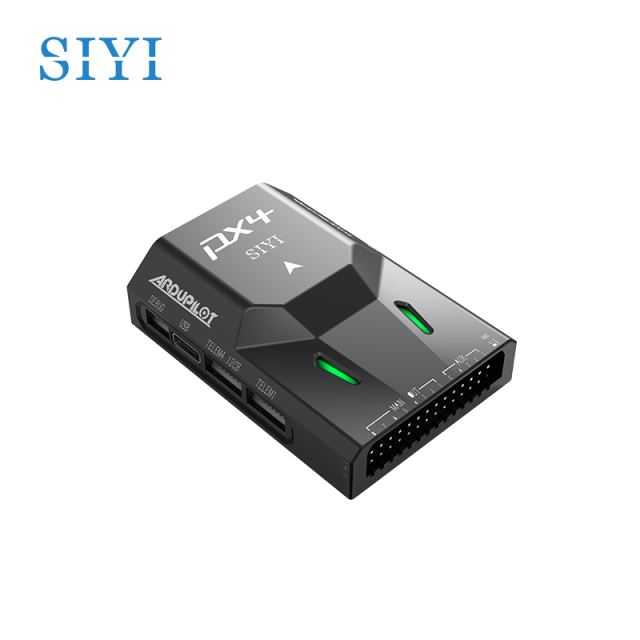Discovering the Role of Drone Trip Controllers in Enhancing Flight Stability and Navigation Performance
The advancement of drone technology has dramatically enhanced the value of flight controllers, which function as the brain of these aerial automobiles. By integrating real-time information from a selection of sensing units, flight controllers improve trip stability and navigating efficiency, guaranteeing that drones can run efficiently even in intricate environments. This conversation will certainly discover the vital elements that add to these renovations, as well as the effects for the future of self-governing flight. What technologies lie in advance that could better change the capabilities of drone trip controllers?

Recognizing Flight Controllers
Flight controllers are essential elements in the performance of drones, working as the minds that stabilize and manage flight operations. These sophisticated devices process data from various sensors, including accelerometers, gyroscopes, and GPS, to ensure that the drone keeps its designated flight course. The trip controller translates this information and carries out commands based upon pre-defined algorithms, making it possible for the drone to react to ecological adjustments, such as wind or barriers.
The key feature of a trip controller is to keep security throughout flight. It accomplishes this by making real-time modifications to the drone's electric motors and control surfaces, ensuring balance and control. Additionally, modern trip controllers include sophisticated features such as waypoint navigating, allowing for automated trip courses and improved operational performance.
Understanding the architecture of flight controllers is essential for both specialists and hobbyists. As modern technology advancements, trip controllers have come to be more portable and capable, integrating fabricated intelligence to enhance decision-making procedures and adapt to complex flight circumstances.
Key Parts of Trip Security
Achieving ideal trip security in drones relies upon numerous vital components that function in performance to ensure smooth and controlled procedures. Central to this stability is the flight controller itself, which refines data from different sensing units to keep the preferred trip perspective. This consists of accelerometers and gyroscopes that measure motion and positioning, permitting real-time changes to the drone's placement.
Another vital component is the electronic speed controllers (ESCs), which control the power provided to the electric motors. By carefully adjusting motor rates in action to trip controller commands, ESCs help maintain balance and combat disturbances caused by wind or sudden motions.
Furthermore, the style of the drone's framework plays a critical role in trip stability. A well-structured frame reduces vibrations and enhances the overall wind resistant account, adding to smoother trip features. Finally, the integration of advanced algorithms within the flight controller aids in predictive changes, ensuring a receptive and versatile trip experience.
With each other, these parts develop a natural system that boosts a drone's security, enabling for exact handling and improved performance in different flight problems.
Navigating Effectiveness Techniques
Performance in navigating is necessary for enhancing drone operations, specifically in complicated environments. Reliable navigation strategies improve the ability of drones to go across challenging surfaces and prevent obstacles, therefore enhancing operational performance and security.
One popular technique is the application of sophisticated GPS and inertial measurement devices (IMUs) that supply exact place monitoring and positioning information. These modern technologies allow drones to compute optimal trip courses in real-time, taking into consideration numerous elements such as wind conditions and potential challenges.
An additional technique includes making use of algorithms for path preparation and optimization. Algorithms such as A * and Dijkstra's algorithm can be deployed to determine the most reliable route while reducing power consumption and flight time. Incorporating device understanding models can make it possible for drones to adaptively learn from their settings, enhancing navigating capacities via experience.

Influence On Autonomous Drones
The combination of advanced navigating strategies has actually exceptionally transformed the capacities of self-governing drones, enabling them to run with better autonomy and accuracy. SparkNavi drone flight controller and GNSS/INS made in taiwan. These enhancements are primarily attributed to sophisticated flight controllers that utilize real-time data processing and sensor fusion, allowing drones to browse intricate settings seamlessly
The effect on autonomous drones extends past simple navigation; it encompasses improved obstacle avoidance, boosted security throughout dynamic conditions, and enhanced mission reliability. By leveraging formulas that incorporate equipment understanding and fabricated knowledge, drones can adapt to changing conditions, making notified choices that maximize their trip courses while decreasing risks.
Moreover, the application of durable flight controllers has promoted the implementation of complex tasks, such as aerial inspections, distribution services, and farming surveillance, with very little human intervention. This capacity not only simplifies procedures however also minimizes human error, consequently improving total safety and security.
Because of this, the operational extent of autonomous drones has expanded considerably, making them vital devices in different sectors. Their ability to execute successfully in diverse circumstances underscores the important role that advanced flight controllers play fit the future of unmanned aerial systems.
Future Fads in Flight Control
Regularly, developments in trip control technology are positioned to redefine the landscape of drone procedures in the coming years. Emerging patterns show a significant change in the direction of enhanced man-made knowledge (AI) integration, allowing trip controllers to refine real-time data extra efficiently. This advancement link will certainly facilitate enhanced decision-making capacities, allowing drones to adapt to vibrant environmental conditions autonomously.
Moreover, the execution of maker knowing formulas is expected to enhance anticipating upkeep, thus decreasing downtime and expanding the lifecycle of drone parts. This aggressive technique to upkeep will certainly be vital as drone applications increase throughout various industries, from agriculture to logistics.

.png)
Finally, improvements in safe and secure communication protocols will deal find more info with security and regulatory concerns, ensuring that drones can operate perfectly in congested airspaces (SparkNavi drone flight controller and GNSS/INS made in taiwan). Collectively, these trends aim in the direction of a future where flight control systems are not only smarter and more additionally qualified however effective of running securely in a progressively integrated airspace
Conclusion
In verdict, drone flight controllers are integral to improving trip security and navigation performance via the innovative processing of sensing unit data. By keeping optimal trip attitudes and utilizing innovative formulas for course optimization and obstacle avoidance, these controllers substantially add to the freedom and operational safety of drones. As innovation proceeds to advance, further developments in flight control systems are expected, assuring better efficiency and expanded capabilities in the realm of unmanned aerial cars.
By integrating real-time data from a range of sensors, flight controllers improve flight stability and navigation efficiency, making sure that drones can run smoothly even in complicated atmospheres.Flight controllers are essential components in the look at here now functioning of drones, offering as the brains that stabilize and take care of trip procedures. In addition, modern trip controllers include innovative functions such as waypoint navigation, allowing for automated trip courses and improved operational efficiency.
Central to this security is the flight controller itself, which processes information from numerous sensors to maintain the preferred flight perspective.In final thought, drone trip controllers are essential to enhancing trip security and navigation efficiency via the advanced processing of sensing unit data.